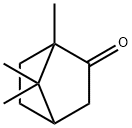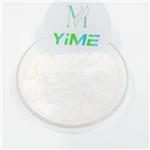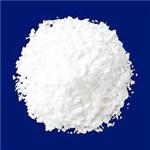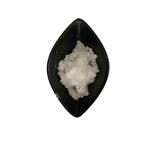Camphor is a white, waxy organic compound that is incorporated in lotions, ointments, and creams. Camphor is also an active ingredient that is integrated into a majority of over-the-counter medications for cold and cough relief. Camphor oil is obtained from camphor tree wood, where the extract is processed through steam distillation. It has a pungent odor and a strong taste, and it can be absorbed into the skin easily. Currently, synthetic camphor is extracted from turpentine, and it is considered safe for use as long as appropriate indications are upheld.
Camphor has a wide range of uses based on its anti-inflammatory, anti-fungal, and anti-bacterial properties. It can be used for the treatment of certain skin conditions, enhance respiratory function and as a pain reliever.
Camphor may also be indicated for the treatment of low libido, muscle spasms, anxiety, depression, flatulence, and poor blood circulation, corns, symptoms of heart disease, cold sores, earaches, acne, and hair loss.
Camphor is considered effective for coughs, pain, skin irritation or itching relief, and osteoarthritis. However, there is insufficient evidence that reinforces its effectiveness as a treatment for hemorrhoids, warts, and low blood pressure and as a remedy for insect bites.
The topical dose of camphor is 3-11% as an ointment. For skin irritation, itching and pain, 3-11% of the ointment should be applied to the skin 3-4times per day. For coughs and cold relief, a dense layer of 4.7-5.3% of Camphor ointment can be spread evenly onto the chest. For Osteoarthritis, a topical combination comprising 32mg/g of camphor, 50mg/g of chondroitin sulfate, and 30mg/g of glucosamine sulfate can be applied based on one’s requirements for about 8 weeks.
To relieve respiratory congestion through inhalation, 1 tablespoon of Camphor for every quart of water should be placed in a vaporizer 3 times per day. The American Academy of Pediatrics suggests that Camphor should not exceed 11% for topical products and disqualifies the oral use of camphor in children as it may result in toxicity and death.
There are no known mild, moderate or severe drug interactions associated with Camphor. However, if a doctor or pharmacist suggests that one can use camphor while on certain medications, then they are aware of potential drug interactions and they could be putting the patient on observation. One should always notify their doctor or pharmacist if they have health concerns or questions related to camphor.
Common side effects associated with Camphor include skin irritation and redness, burning sensation in the throat and mouth, vomiting, nausea, Lip dryness, rashes, eczema, seizures, respiratory issues, toxicity, scalp issues and chest problems.
In pregnant or lactating mothers, camphor may result in physical and neurological damage to the developing fetus as it can be absorbed through the placenta. It can also be absorbed through the skin hence it can contaminate milk in lactating women. Camphor is considered exceptionally harmful for people with Parkinson’s disease as it interacts negatively with medications for Parkinson and it can result in high toxicity levels.
Cinnamomum camphora, Lodine and cemphire should not be prescribed to a person who is allergic to camphor or its constituent ingredients.
Camphor is safe when used appropriately hence one should confirm that its composition in camphor products does not exceed 11%. A skin patch test is highly recommended before application of camphor products onto the skin.
Camphor products should not be applied onto injured or broken skin as toxic levels of the product may be absorbed into the body. Camphor may also induce respiratory issues such as wheezing when inhaled.
Camphor was recorded in the ancient books of traditional Chinese medicine, such
as Pin Hui Jing Yao, Ben Cao Gang Mu, and Sheng Lian Fang. There has been a
long history for traditional Chinese medicine to use camphor.
Both optical isomers are found widely in nature, with
(+)-camphor being the more abundant. It is, for example, the main
component of oils obtained from the camphor tree C. camphora.
Camphor is produced by fractional distillation and crystallization of camphor
oil or, synthetically, by dehydrogenation of isoborneol over a copper catalyst.
Due to its characteristic penetrating, slightly minty odor, camphor is only used
in perfuming industrial products. It is far more important as a plasticizer.
Camphor, C1oH160, also known as d-2-camphanone, Japan camphor, laurel camphor,Formosa camphor,and gumcamphor,is a terpene ketone. It is colourless solid with a characteristic odour that is obtained from the wood and bark of the camphor tree and is soluble in water and alcohol. It has two optically active forms (dextro and levo) and an optically inactive mixture (racemic) of these two forms. Camphor is used in pharmaceuticals,in disinfectants, in explosives,and to harden nitrocellulose plastics.
Camphor is a colorless glassy solid. Penetrating, characteristic odor.
Colorless to white, flammable granules, crystals or waxy semi-solid with a strong, penetrating,
fragrant or aromatic odor. Odor threshold concentration is 0.27 ppm (quoted, Amoore and
Hautala, 1983).
The research and development process of camphor has gone through from the natural
product extraction to the modern chemical drug synthesis. For a long time,
the Chinese extracted camphor mainly from camphor tree (Cinnamomum camphora),
root bark of bodinier cinnamon, and Yunnan camphor tree. With the development
of chemical industry, human beings started to use chemical synthesis
methods to obtain a large amount of camphor. At present, the chemical synthesis
process of camphor in China has been well developed. The synthetic camphor is
divided into industrial and pharmaceutical grades. The industrial grade camphor has
a content of up to 96% or higher, and the pharmaceutical grade camphor with high
purity can meet the standard of pharmacopeia.
dl-Camphor is used as a plasticizer for celluloseesters and ethers; in the manufacture ofplastics and cymene; in cosmetics, lacquers,medicine, explosives, and pyrotechnics; andas a moth repellent.
camphor (Cinnamomum camphora) is credited with anesthetic, antiinflammatory, antiseptic, astringent, cooling, and refreshing properties, and thought to be slightly stimulating to blood circulation and function. once absorbed by the subcutaneous tissue, it combines in the body with glucoronic acid and is released through the urine. Camphor is effective for oily and acne skin treatment, and has a scent similar to eucalyptus. In high concentrations, it can be an irritant and numb the peripheral sensory nerves. natural camphor is derived from an evergreen tree indigenous to Asia, although now its synthetic substitute is often used.
A ketone occurring naturally in the wood of the cam-
phor tree (Cinnamomum camphora).
camphor: A white crystalline cyclicketone, C10H16O; r.d. 0.99; m.p.179°C; b.p. 204°C. It was formerly obtainedfrom the wood of the Formosancamphor tree, but can now besynthesized. The compound has acharacteristic odour associated withits use in mothballs. It is a plasticizerin celluloid.
A naturally-
occurring white organic compound
with a characteristic penetrating odor. It is
a cyclic compound and a ketone, formerly
obtained from the wood of the camphor
tree but now made synthetically. Camphor
is used as a platicizer for celluloid and as an
insecticide against clothes moths.
Camphor is a ketone which, when applied in 1% to 3% concentration, has mild
antipruritic effects through its anesthetic and counterirritant properties. Counterirritants
are substances that, by inducing other sensations such as coolness or warmth,
‘‘crowd out’’ the perception of pain or itch. Camphor is used in various OTC topical
analgesic products in concentrations as high as 9%.
Anbesol;Cresophene;Dasin;Ddd;Endrine;Makatussin;Mentol sedans sulfamidad;Nasello;Resol;Root bark oil;Spirit of camphor;Tcp;Tetesept;Topic.
World Health Organization (WHO)
Camphor, an aromatic crystalline substance with mild local
anaesthetic activity, is available in preparations for both external application and
inhalation. The use of such preparations has precipitated convulsions in
susceptible infants. This has led several regulatory authorities to require the
inclusion of appropriate warnings on labelling.
A colorless or white colored crystalline powder with a strong mothball-like odor. About the same density as water. Emits flammable vapors above 150°F. Used to make moth proofings, pharmaceuticals, and flavorings.
Highly flammable. Slightly soluble in water.
Naphthalene, Camphor, glycerol, or turpentine will react violently with chromic anhydride [Haz. Chem. Data 1967 p. 68].
Evolves flammable and explosive vapors
when heated. Eye and upper respiratory tract irri-
tant, and anosmia. Questionable carcinogen.
Fire may produce irritating and/or toxic gases. Contact may cause burns to skin and eyes. Contact with molten substance may cause severe burns to skin and eyes. Runoff from fire control may cause pollution.
Vapors of camphor can irritate the eyes, nose,and throat. In humans, such irritation may be felt at >3 ppm concentration. Prolongedexposure can cause headache, dizziness, andloss of sense of smell. Ingestion can causeheadache, nausea, vomiting, and diarrhea,and at high dosages can lead to convulsion,dyspnea, and coma. High dosages can beharmful to gastrointestinal tracts, kidney,and brain.
LD50 value, intraperitoneal (mice): 3000mg/kg.
Flammable/combustible material. May be ignited by friction, heat, sparks or flames. Some may burn rapidly with flare burning effect. Powders, dusts, shavings, borings, turnings or cuttings may explode or burn with explosive violence. Substance may be transported in a molten form at a temperature that may be above its flash point. May re-ignite after fire is extinguished.
Camphor is toxic to human. Overdose of camphor can cause irritability, drowsiness,
muscle spasms, vomiting, convulsions, epilepsy, and other symptoms. The lethal
dose of camphor is 50–500 mg/kg (oral administration). In general, 2 g of camphor
can cause serious toxicity, and 4 g of camphor will produce fatal toxicity.
Camphor can cause a cold sensation similar to mint when applied to human skin.
In addition, it has a slightly local anesthetic effect. It can act on the gastrointestinal
mucosa to produce a certain degree of stimulating effect. An appropriate dose of
camphor can make people feel warm and comfortable in the stomach, but high dose
of camphor will cause nausea and vomiting reaction. The effect of camphor on the
central nervous system is obvious. It can act on the motor area of cerebral cortex and
brain stem to produce the epilepsy-like seizures.
It is generally believed that camphor may have some therapeutic effects on
patients with acute heart failure or recurrent collapse. A low dose (50 mg) may treat
mild heart fatigue and other illnesses. The oxidized camphor metabolite has a more
obvious cardiotonic, hypertensive, and respiratory excitement effects.
Camphor can be absorbed by the body after oral administration easily through
the mucous, subcutaneous, and muscle. The in vivo metabolism of camphor occurs
mainly in the liver. It is firstly oxidized into camphorol and then goes through phase
II metabolism to produce glucuronide conjugate with glucuronic acid. Finally, the
vast majority of glucuronide conjugate is excreted from the urine.
Camphor is mainly used for the treatment of pruritic skin diseases, fibrous tissue
inflammation, neuralgia, and influenza.
A human poison by
ingestion and possibly other routes. An
experimental poison by inhalation,
subcutaneous, and intraperitoneal routes. A
local irritant. Ingestion causes nausea,
vomiting, dizziness, excitation, and
convulsions. Mutation data reported. Used
Camphor is a very toxic compound which can prove fatal for infants and children on ingestion even in very small doses. Camphor products are toxic and especially dangerous to young children. Mouthing or eating camphor can cause seizures. Applying balms or ointments in large amounts and adding it to the water of a room humidifier may also cause children to seize. The onset of symptoms may occur very quickly - as early as 5 to 20 minutes.
Camphor, a natural product, is used as
a plasticizer for cellulose esters and ethers; it is used in lacquers and varnishes; and in explosives and pyrotechnics formulations. It is used as a moth repellent and as a medicinal.
If this chemical gets into the eyes, remove anycontact lenses at once and irrigate immediately for at least15 min, occasionally lifting upper and lower lids. Seek medical attention immediately. If this chemical contacts theskin, remove contaminated clothing and wash immediatelywith soap and water. Seek medical attention immediately. Ifthis chemical has been inhaled, remove from exposure,begin rescue breathing (using universal precautions, including resuscitation mask) if breathing has stopped and CPR ifheart action has stopped. Transfer promptly to a medicalfacility. When this chemical has been swallowed, get medical attention. Give large quantities of water and inducevomiting. Do not make an unconscious person vomit.
Camphor was not teratogenic to rats or
rabbits when administered orally during the
fetal period of organogenesis at doses up
to 1000mg/kg body weight (bw)/day or
681mg/kg bw/day, respectively.9 Signs of
maternal toxicity included clonic convulsions,
reduced motility, and reduced body weight gain
in rats and reduced food consumption and body
weight gain in rabbits.
Major component in pine oil (quoted, Verschueren, 1983). Also present in a variety of
rosemary shoots (330–3,290 ppm) (Soriano-Cano et al., 1993), anise-scented basil leaves (1,785
ppm) (Brophy et al., 1993), Iberian savory leaves (2,660 ppm) (Arrebola et al., 1994), African blue
basil shoots (7,000 ppm), Greek sage (160–5,040 ppm), Montane Mountain mint (3,395–3,880
ppm), yarrow leaves (45–1,780 ppm), and coriander (100–1,300 ppm) (Duke, 1992).
Color Code—Red: Flammability Hazard: Store ina flammable materials storage area. Prior to working withcamphor you should be trained on its proper handling andstorage. Before entering confined space where this chemicalmay be present, check to make sure that an explosive concentration does not exist. Camphor must be stored to avoidcontact with oxidizers, such as permanganates, nitrates, peroxides, chlorates, and perchlorates, and especially chromicanhydride since violent reactions occur. Store in tightlyclosed containers in a cool, well-ventilated area away fromheat, sparks, or flame. Sources of ignition, such as smokingand open flames are prohibited where camphor is used, handled, or stored in a manner that could create a potential fireor explosion hazard.
UN2717 Camphor, synthetic, Hazard Class: 4.1;
Labels: 4.1-Flammable solid. UN1130 camphor oil, Hazard
Class: 3; Labels: 3-Flammable liquid
May form explosive mixture with air.
Violent, possibly explosive, reaction with strong oxidizers,
especially chromic anhydride, potassium permanganate.
May accumulate static electrical charges, and may cause
ignition of its vapors.
ncineration of a solution in a
flammable solven.



